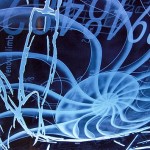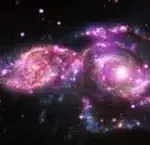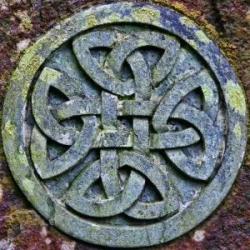
Spirituality Is Not Religion
Spirituality and religion, though related, have important differences. The following is a brief account of this topic as it appeared in an earlier article.(1)
In common usage, the words religion and spirituality are often treated as synonyms. Yet many people today say they are drawn to spirituality, but not to religion. For such people, and I am one of them, the words “religion” and “spirituality” refer to significantly different things.
In a podcast published on this site on March 7, 2018, Daniel Strain, Leigh Anderson, and I discussed our understanding of these two words and the distinctions we brought to them. The following are some of the differences we noted:
Religion is generally based on beliefs or a notion of revelation; spirituality on experiences.
Religion is social and collective; spirituality is more individual.
Religions have a tendency to exhibit an “us” vs. “them” mentality; spirituality tends to the notion that we are all one.
Religion tends to emphasize boundaries and spirituality tends to emphasize the transcending of boundaries.
In his book, Hymns to an Unknown God, Sam Keen provides his own list of the differences between religion and spirituality, including the following:
Chief virtue is obedience to the will of God vs. chief virtue is openness, waiting, listening.
Revelation vs. awareness.
Based on miracle, mystery, authority, a revealed scripture vs. based on searching for evidence of the sacred.
The Gothic urge to rise above it all vs. the incarnational thrust to get to the depths of things.
For me, the key idea here is that spirituality is about experience rather than adherence to beliefs. While there are forms of spirituality based on unnaturalistic or highly metaphysical ideas, there are also forms independent of any such ideas, including various forms of naturalistic spirituality.
Spiritual Experience
So if spirituality is about experience rather than belief, what kind of experience does it seek? In previous articles, I have suggested that spirituality seeks some form of “communion.” In an article titled “Communion,”(2) I wrote:
By communion, I mean any kind of experiential integration of the individual being into a larger whole. The communion experience might be ephemeral or enduring; it might come as part of formal ritual or arise spontaneously. The aboriginal return to the “dream time”; the sacrament of communion in Christian Churches; the experience of Samadhi, Satori, or Nirvana of the Eastern Religions; the beatific vision of the Western mystic – are all in the gamut of the experience of communion.
This experience provides a direct revelation of our connection to something greater than our individual self, with its individual desires and satisfactions.
A more recent article, “Defined by Something Larger,”(3) speaks more directly of my personal view on this. In that article I described how completely contingent we human beings are on external conditions — the conditions that support our existence as a biological being and those that inform our consciousness as a cultural being. I summarize this idea with the following:
from the naturalistic perspective, the self is all otherness! But note that this statement contains two parts: the first, “the self is”: this speaks to why, for each of us, the self seems the most direct and obvious reality; the second part addresses the contingent nature of that “is.”
While from an externalized, naturalistic perspective we can characterize this otherness in terms of physical and informational processes, from an internalized, experiential perspective we have to address it in other terms. In any given moment, we experience the self as a particular collection of the contents of awareness. These contents are in constant flux, some moving quickly through consciousness, some moving more slowly, but all moving. We can search consciousness for a particular content that is our enduring self but, at least in my experience, no such content can be found. The best candidate is the very part of our being that is searching, but that too is ephemeral. The only element of consciousness that endures is “our” raw awareness, which is featureless and without identity. All else is contingency and otherness.
I’ll bring one more perspective into the question of self and otherness, the neurological. From this perspective, consciousness is energy and exchange within a complex neural network. There is no separate, privileged part of the nervous system that can be identified as an enduring self. Also, from a neurological perspective, the nervous system of one healthy human is largely similar to that of any other healthy human. Individuality, it would seem, is a cultural construct, not an objective characteristic.
Nonduality
The Chandogya Upanishads, introduces an expression that, I believe, states something very similar to the idea that the self is all otherness: Tat Twam Asi, “Thou Art That.” In this statement, “That” is the otherness, the essence of the universe, that many religions call God. The statement is saying that this is what we really are. In the spirituality of the Upanishads, as with much “mystical” spirituality, a complete identification of self with divinity is the aim. With a naturalistic spirituality, this “divinity” is not some supernatural entity, but the great process of Nature, the process within which our being is embedded. Nonetheless, I think the experience is largely the same whether we define the nature of “That” in naturalistic or mythological terms.
In a complete identification with “That”, whether divine or otherwise, there is no self and other, no inside and outside, no dualistic terms whatsoever. It is the experience of nonduality.
When describing the experience of nonduality, an expression frequently used is “subject and object are one and the same.” This expression sums up why nonduality is called what it is. Within this experience, there is no longer a separation between self and other, there is only the indivisible experience itself. There is only one experience where subject and object are one and the same, and that is why I call this experience an absolute experience.
For a spiritual seeker, the experience of nonduality can metaphorically be compared to a journey to the North Pole. On such a journey you move ever closer to the Pole, but once there, every movement is a movement away. To be at the North Pole, you have to sit still.(4) So too with the experience of nonduality, every movement is movement away. The image of the seated Buddha is the best text I know of what it is to be at such a pole.
While there is something wonderful and liberating about the experience of nonduality, who wants to sit for any great time at the North Pole? In a well known set of poems and images called “The Oxherding Series,” the experience of nonduality is described and imaged in the eighth of the ten stages of the series. I have attached the image (or perhaps I should say non-image) below, though it is better to come across this within the full series. But this is not where the series ends.

The final stage of this series is “the return to the marketplace,” which is to say, ordinary life, where the series started. Some forms of spirituality are based on the notion that having reached an absolute state, one should seek to abide there permanently. For all kinds of reasons, I think this wrong, whereas I think the Oxherding Series gets it right. What else is there to do but return to ordinary life. Spirituality, though, has the ability to renew the ordinary, so that it is also a bit extraordinary. A line from the poet T. S. Eliot captures this idea: “We shall not cease from exploration, and the end of all our exploring will be to arrive where we started and know the place for the first time.”
The sixth stage of the Oxherding Series is called “Riding the Bull.” I’m not exactly sure what the creator of this series meant by “riding the bull,” but my understanding of it is that it’s the step where we finally feel centered and in control of the mind. It is the state that I referred to in a recent article, “The Post-biological Epoch,”(5) when I wrote:
The word cybernetics was first used in the context of “the study of self-governance” by Plato in the Republic. It comes from a Greek word for steering or using a rudder….At the heart of meditation there is also a kind of steering, a governing of the mind’s activities. As we practice this self-governing, we come to feel we are operating from a kind of center, steering the ship of our being.
To “ride the bull” is to hold the reins of our being the way an expert equestrian holds the reins of his or her horse or a skilled captain holds the wheel of a ship. The desirability of such a state of self-governance is common to Stoicism, Neo-Platonism, Christianity, and most of the meditative traditions.
Although there is great value in the experience of nonduality, I place more emphasis on “riding the bull” in my spiritual practice. But this is a topic for a future article.
Notes:
1. Spirituality and Religion, published August 1, 2019
2. Communion, published June 8, 2017
3. Defined by Something Larger, published Sept. 3, 2020
4. Articles about the experience of nonduality include Naturalism and the Idea of One Mind, published Dec. 10, 2015; Bicycle Meditation, published May 22, 2013; The Perfect View, published March 29, 2018; and many others.
5. The Post-biological Epoch, published March 4, 2021.
Subscribe to The Spiritual Naturalist Society
Learn about Membership in the Spiritual Naturalist Society
__________
The Spiritual Naturalist Society works to spread awareness of spiritual naturalism as a way of life, develop its thought and practice, and help bring together like-minded practitioners in fellowship.













